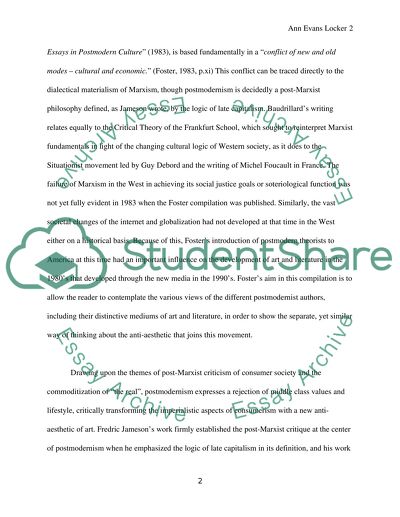Cite this document
(“The Anti-Aesthetic of Postmodernism: New Literary Definition or Just Term Paper - 1”, n.d.)
The Anti-Aesthetic of Postmodernism: New Literary Definition or Just Term Paper - 1. Retrieved from https://studentshare.org/performing-arts/1428834-compare-the-anti-aesthetic-of-postmodern-theory
The Anti-Aesthetic of Postmodernism: New Literary Definition or Just Term Paper - 1. Retrieved from https://studentshare.org/performing-arts/1428834-compare-the-anti-aesthetic-of-postmodern-theory
(The Anti-Aesthetic of Postmodernism: New Literary Definition or Just Term Paper - 1)
The Anti-Aesthetic of Postmodernism: New Literary Definition or Just Term Paper - 1. https://studentshare.org/performing-arts/1428834-compare-the-anti-aesthetic-of-postmodern-theory.
The Anti-Aesthetic of Postmodernism: New Literary Definition or Just Term Paper - 1. https://studentshare.org/performing-arts/1428834-compare-the-anti-aesthetic-of-postmodern-theory.
“The Anti-Aesthetic of Postmodernism: New Literary Definition or Just Term Paper - 1”, n.d. https://studentshare.org/performing-arts/1428834-compare-the-anti-aesthetic-of-postmodern-theory.


